“…The Sun Yat-Sen Classical Chinese Garden rises from a
former parking lot on the edge of Vancouver’s Chinatown, the third largest
outside the Orient, topped only by those of San Francisco and New York. It is
the first (and is reputed to be the most authentic) full-scale classical
Chinese garden ever built outside of China. … The finished product is a
pocket-sized otherworld, a walled oasis of harmony where careful attention is
paid to a classical balance between yin and yang: contrasting light and shadow,
large and small, smooth and rough…”
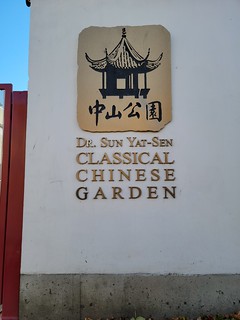
This garden is beautiful.
It’s literally as described “a pocket-sized otherworld, a walled oasis
of harmony”. They also have a couple of
things to make a visit educational and enjoyable. Their Visitor’s Guide is
really excellent, and they have a couple of scavenger hunts on their website to
help keep kids (and Jalaires) engaged during their visit. Most of the below is straight from the Visitor's Guide and the Scavenger Hunt

From the Guide:
Moon Gate: Throughout the Garden, you will see circular opening and doorways. These are called Moon Gates, and like our beautiful leak windows, are perfect for framing views as you explore. The circular shape is symbolic of heaven and perfections, while the square and hexagonal shapes seen in other areas of the Garden represent earth.
Double Corridor: The double corridor acts as both a dividing and linking border between the classical Garden and adjoining public park, organically combining them into one whole. The ‘zigzag’ colonnade is designed to slow your stride and ensure the entire path is never seen at once. Views from both sides appear and disappear like paintings displayed in a long gallery.
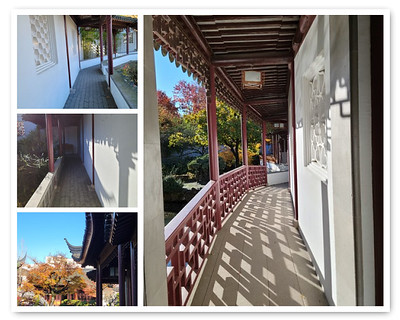
Jade Water Pavilion: Like our double corridor, the Jade Water Pavilion called Han Bi Xie is a building that sits above the water, framing views on both sides. Notice the beautiful woodwork and lattice framed windows with patterns of plums, orchids, bamboo, and chrysanthemums.
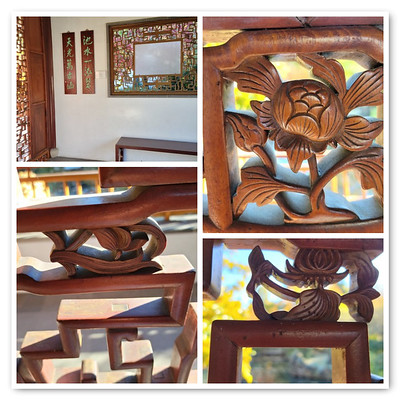
Lookout & South Courtyard: The back pavilion, or lookout, provides one of the best perspectives of the Garden, although even from here you cannot see all the various elements in one glance. As you follow the path, notice the change in the zigzag pattern, and enjoy the serenity of the “heavenly well”; the small triangular courtyard where the walls and roof meet to highlight a beautiful garden scene.


Ting: The Cloudy and Colorful Pavilion is the focal point of the Garden as it sits high on a mountain of Tai Hu rocks. This traditionally-shaped pavilion is called a Ting, and is a very common feature in classical Chinese gardens, as it is considered an ideal space to sit and observe the world.

Scholar’s Study and Courtyard: The Scholars who would have lived in garden-homes read, wrote, composed poetry, studied music and painted here, in the most serene part of the Garden. See examples of a Scholar’s traditional “tools” in the study, including his writing implements, such as an ink stone, brushes, and any seals used to sign correspondence or poetry. As you explore the Garden, look for the artists’ seals in red on the bottom of mounted paintings and poems.
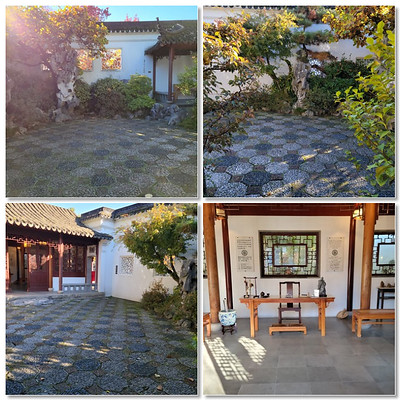

Music Pavilion: Situated on the edge of the Scholar’s
Courtyard, this small pavilion would have showcased musicians hired to entertain
the Scholar and his guests. Designed to promote acoustics, this small podium is
raised above the courtyard as a sign of respect to the musicians who would have
otherwise been considered of a lower social status to the Scholar.
Hall of One Hundred Rivers & Courtyard: Like rivers flowing into the sea, people with different vitures and contributions flow together to create a community and a better society. This largest and newest hall was built to showcase exhibitions and accommodate expanding educational and public programming needs.
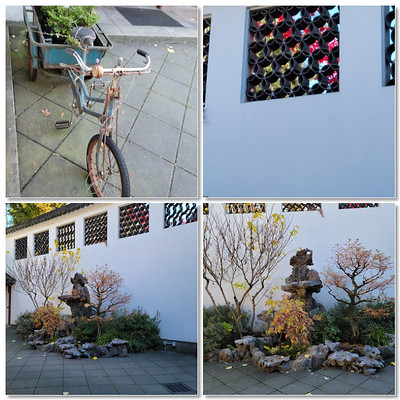
China Maple Hall or Hua Feng Tang: The heart of this garden-home, China Maple Hall is a prime example of the traditional Ming dynasty building techniques (no nails, screws, or glue) found throughout the Garden. This hall contains rare, naturally stained nan wood pillars that were gifted from Suzhour and natural camphor rafters whose scent repels insects.

See part II for the Scavenger Hunt.

